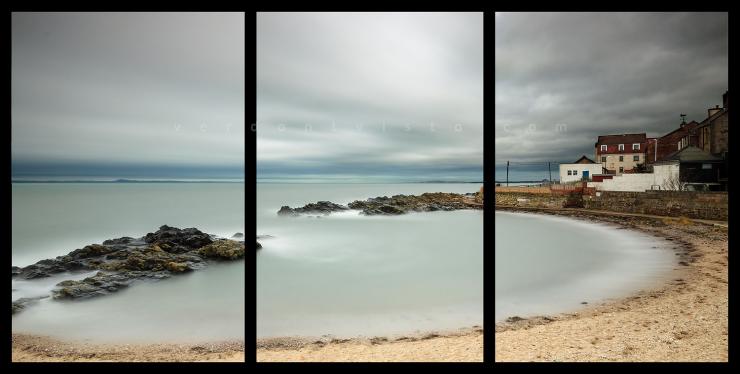
Click for a larger version
Anyone who's tried Image Averaging knows that once you've flattened your layers, you're left with a pile of "unneeded" images left over once you've created your final IA. I've been thinking about how else these could be used. There is the single frame for a short exposure version of your image, but why limit yourself to these two options. You can select any number from your set, as long as they are sequential, to create a exposure time equivalent of anything from the shutter speed of a single frame right they way up to the total long exposure equivalent you get from image averaging all the frames. This in effect allows you to choose the exposure time once you get back to base.
So in terms of creative photography, I thought about taking this one step further and blending these exposure times into a single image. In the example I want to present here I'll be blending a long exposure sea with long, medium and fast exposure sky.
Remember with IA you have the exact same visual image in terms of brightness/contrast/saturation no matter what the equivalent exposure time is. There is only one caveat... for maximum flexibility and granularity of your equivalent exposure time, you'll want to do short individual exposures and a LOT of them. The resulting processing time in this is quite significant. I think I spent about 2 - 3 hours on this piece alone. Although my PC is very slow I do have a speed benefit in that I'm "only" processing 12MP RAW files.
Cockenzie
I took a wee trip to explore some of the Edinburgh coastline - I've been making my way eastwards from Crammond. Today I was going from Leith Docks to have a look at the rocks at the far side. Sadly I couldn't find out how to get there as it looked closed to the public. After this I went to Joppa and found some interesting steps then headed to Prestonpans where Cockenzie Power Station is in the process of being demolished before finally stopping at Cockenzie
The image I'll be using to illustrate the idea of mixing exposures times is of a lovely, compact and bijou bay in Cockenzie at the end of my journey. I've visited this little bay once before:
Cockenzie
Shooting
I stacked my 0.3 and 0.6 Lee Filters to cover the full frame and the 0.9 to grad out the sky.
I used an intervalometer and made sure to keep the delay as low as possible because the clouds where moving very quickly.
In total, I captured 105 frames in 7 groups of 15. All frames are exposed at around 1s with a 1s delay between each frame. The groups where spaced less accurately. Some are as little as 1s while others are as long as 15s. However the total long exposure time equivalent was 4m23s.
In each of the 3 versions below, I have used the same 4m23s image averaged sea. The variations between each image is only the number of frames I've used for the sky.
Long Exposure Sea, Long Exposure Sky
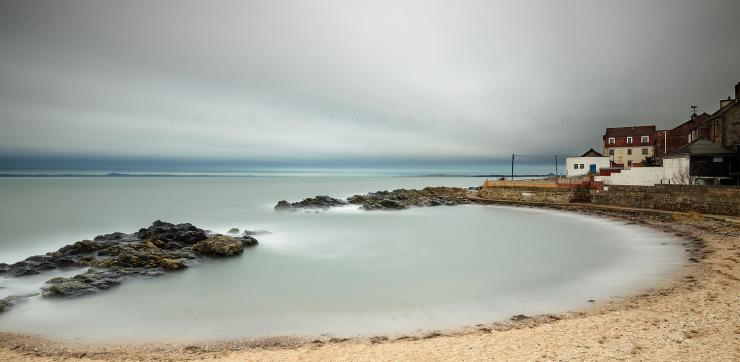
Click for a larger version
In the first version the sea and sky come from the run of image averaging of all 105 frames each at 1s exposures with a 1s delay giving a total 4m23s sea & sky long exposure equivalent.
Long Exposure Sea, 27s Exposure Sky

Click for a larger version
In this one I've taken a sequential subset of 15 frames, averaged these together as a shorter exposure equivalent then masked out everything but the sky. This means the image is made up of "two" exposures, one of 27s for the sky and the 4m23s for the sea.
Long Exposure Sea, 1s Exposure Sky
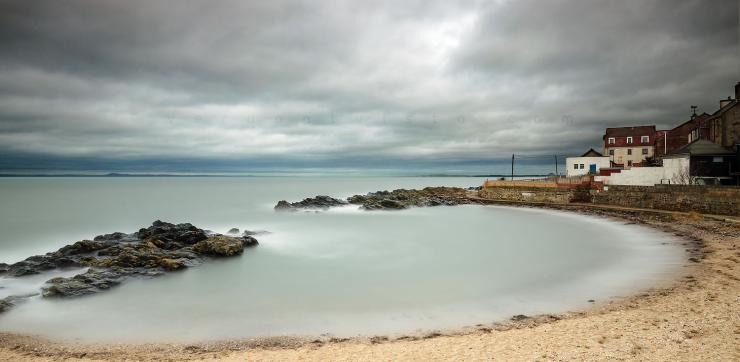
Click for a larger version
In the final version I've taken a single 1s exposure and masked out everything but the sky. This means this image is also a blend of "two" exposures, the first being a 1s exposure for the sky while the second is the 4m23s for the sea. I like the impact of this type of blend and this is the one I really wanted to show off. When I've used this blend I've always gone for the long exposure sea and fast exposure sky. It is a slightly strange effect but I quite like it.
Conclusions
I'm pretty sure it'd be difficult to do this without image averaging. You run the risk of changing the composition, even fractionally, by nudging the camera while mounting filters, introducing colour cast caused by the filter or even accidentally changing focus or zoom. To say nothing of the range of filters you'd need to employ. Finally, if your doing long exposures during the golden hour you have to take into account changing light conditions.
So how does the blend of short and long exposure times work for you? Did you barely notice till it's pointed out? Is it jarring and just downright wrong?
As ever, your thoughts are always welcome.
Neil.
p.s. This is a sample of my "Exposure Time Blends" to date: -

Click for a larger version
Seacliff
Seacliff
Click to visit the image page.
 |
|
Captured: Sunday, April 9, 2017 at 6:53 PM |
 |
|
Uploaded: Tuesday, April 11, 2017 at 11:26 AM |
EXIF
 |
|
15
mm |
|
 |
f/14 |
|

NIKON D90

|
 |
|
3m25s IA: 31 frames @ 4s with 2s Delay |
|
 |
200 |
|
 |
|
Not Found |
|
 |
Pattern |
|
 |
|
Automatic
|
|
|
|
|
Counts
0 Comments
0 Favourites
4010 Views
Keywords
The Gegan, Seacliff, East Lothian, Scotland, Seascape, Nikon, Sea, D90, LEE Filters, Sky, Rock, Sigma 10-20, Moody, Image Average, Landscape Orientation, Exposure Time Blend, April, 2017, Wave-cut platform

Click for a larger version
Cockenzie (Medium Exposure…
Cockenzie (Medium Exposure Sky)
Click to visit the image page.
 |
|
Captured: Sunday, December 21, 2014 at 2:02 PM |
 |
|
Uploaded: Monday, December 22, 2014 at 3:48 PM |
EXIF
 |
|
19
mm |
|
 |
f/16 |
|

NIKON D90

|
 |
|
4m23s IA: 105 frames @ 1s at 1s Intervals |
|
 |
200 |
|
 |
|
Not Found |
|
 |
Pattern |
|
 |
|
Automatic
|
|
|
|
|
Counts
0 Comments
0 Favourites
1251 Views
Keywords
Scotland, Seascape, Nikon, Sea, D90, LEE Filters, Long Exposure, Sand, Rock, December, Image Average, Cockenzie, 2014, Exposure Time Blend

Click for a larger version
Cockenzie (Short Exposure …
Cockenzie (Short Exposure Sky)
Click to visit the image page.
 |
|
Captured: Sunday, December 21, 2014 at 2:02 PM |
 |
|
Uploaded: Monday, December 22, 2014 at 3:48 PM |
EXIF
 |
|
19
mm |
|
 |
f/16 |
|

NIKON D90

|
 |
|
4m23s IA: 105 frames @ 1s at 1s Intervals |
|
 |
200 |
|
 |
|
Not Found |
|
 |
Pattern |
|
 |
|
Automatic
|
|
|
|
|
Counts
0 Comments
1 Favourites
1284 Views
Keywords
Scotland, Seascape, Nikon, Sea, D90, LEE Filters, Long Exposure, Sand, Rock, December, Image Average, Cockenzie, 2014, Exposure Time Blend

Click for a larger version
Cockenzie (Triptych)
Cockenzie (Triptych)
Click to visit the image page.
 |
|
Captured: Sunday, December 21, 2014 at 2:02 PM |
 |
|
Uploaded: Monday, December 22, 2014 at 3:48 PM |
EXIF
 |
|
19
mm |
|
 |
f/16 |
|

NIKON D90

|
 |
|
4m23s IA: 105 frames @ 1s at 1s Intervals |
|
 |
200 |
|
 |
|
Not Found |
|
 |
Pattern |
|
 |
|
Automatic
|
|
|
|
|
Counts
0 Comments
0 Favourites
3523 Views
Keywords
East Lothian, Scotland, Seascape, Nikon, Sea, D90, LEE Filters, Long Exposure, Art, Sky, Sand, Rock, Cloud, Clouds, December, Image Average, Cockenzie, 2014, Exposure Time Blend, Bay, Compact, Bijou, Triptych
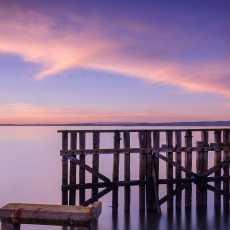
Click for a larger version
Wings over Scotland
Wings over Scotland
Click to visit the image page.
 |
|
Captured: Sunday, November 30, 2014 at 3:42 PM |
 |
|
Uploaded: Monday, December 1, 2014 at 11:37 AM |
EXIF
 |
|
27
mm |
|
 |
f/13 |
|

NIKON D90

|
 |
|
5m47s IA: 33 frames @ 6s at 5s Intervals |
|
 |
200 |
|
 |
|
Not Found |
|
 |
Pattern |
|
 |
|
Manual
|
|
|
|
|
Counts
0 Comments
0 Favourites
2606 Views
Keywords
Sea, Sunset, Edinburgh, LEE Filters, Long Exposure, Sky, Pier, Ruin, Wood, Image Average, Derelict, 2014, East Breakwater, Granton Harbour, Granton, Concrete, Granton Pier, Sigma 18-50, Exposure Time Blend, November
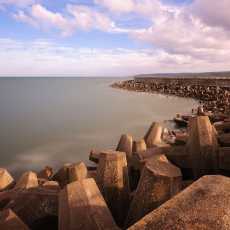
Click for a larger version
Torness Toys - Revisited
Torness Toys - Revisited
Click to visit the image page.
 |
|
Captured: Wednesday, October 8, 2014 at 2:18 PM |
 |
|
Uploaded: Thursday, October 9, 2014 at 11:42 AM |
EXIF
 |
|
15
mm |
|
 |
f/16 |
|

NIKON D90

|
 |
|
5m5s IA: 7 frames @ 35s with 10s Delay |
|
 |
200 |
|
 |
|
Not Found |
|
 |
Pattern |
|
 |
|
Automatic
|
|
|
|
|
Counts
0 Comments
1 Favourites
4470 Views
Keywords
East Lothian, Scotland, Seascape, Nikon, Sea, D90, Torness, Long Exposure, B+W 110 ND, Autumn, Sigma 10-20, Image Average, Landscape Orientation, Sea Defence, Dolos, Dolosse, 2014, Exposure Time Blend, October

Click for a larger version
Sandend Sunset #2.2
Sandend Sunset #2.2
Click to visit the image page.
 |
|
Captured: Saturday, August 10, 2013 at 8:59 PM |
 |
|
Uploaded: Friday, August 16, 2013 at 3:32 PM |
EXIF
 |
|
21
mm |
|
 |
f/16 |
|

NIKON D90

|
 |
|
4m48s IA: 19 frames @ 5s with variable Delay |
|
 |
200 |
|
 |
|
Not Found |
|
 |
Pattern |
|
 |
|
Automatic
|
|
|
|
|
Counts
0 Comments
0 Favourites
3772 Views
Keywords
Scotland, Seascape, Nikon, Sea, D90, Sunset, LEE Filters, Gloaming, Long Exposure, Sky, Sand, Rock, Motion, Cloud, Sigma 10-20, Clouds, Movement, Image Average, 2013, Sandend Beach, Sandend, Aberdeenshire, Stream, Landscape Orientation, Exposure Time Blend, Aberdeen-shire, August
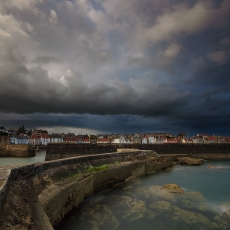
Click for a larger version
Ominous St Monans
Ominous St Monans
Click to visit the image page.
 |
|
Captured: Sunday, July 29, 2012 at 7:53 PM |
 |
|
Uploaded: Monday, July 30, 2012 at 6:47 PM |
EXIF
 |
|
15
mm |
|
 |
f/14 |
|

NIKON D90

|
 |
|
2m 44s - Sky 0.6s |
|
 |
200 |
|
 |
|
Not Found |
|
 |
Pattern |
|
 |
|
Automatic
|
|
|
|
|
Counts
0 Comments
1 Favourites
2692 Views
Keywords
Scotland, Seascape, Nikon, Sea, D90, LEE Filters, Long Exposure, Sky, Summer, Sigma 10-20, Fife, DRI, Sea Wall, Image Average, St. Monans, Wall, 2012, St. Monance, East Neuk of Fife, East Neuk, Landscape Orientation, Sea Defence, Dynamic Range Increase, Exposure Time Blend, July
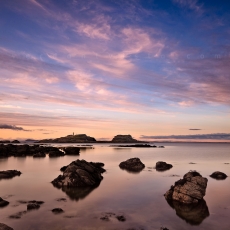
Click for a larger version
Across The Brigs Of Fidra
Across The Brigs Of Fidra
Click to visit the image page.
 |
|
Captured: Saturday, March 17, 2012 at 5:55 PM |
 |
|
Uploaded: Sunday, March 18, 2012 at 9:32 PM |
EXIF
 |
|
24
mm |
|
 |
f/14 |
|

NIKON D90

|
 |
|
3m30s - Sky 1s |
|
 |
200 |
|
 |
|
4294967295m |
|
 |
Pattern |
|
 |
|
Automatic
|
|
|
|
|
Counts
0 Comments
0 Favourites
1618 Views
Keywords
East Lothian, Scotland, Nikon, Sea, D90, Sunset, LEE Filters, Sky, Rock, Cloud, Patterns, Sigma 10-20, Clouds, Square, Image Average, Yellowcraigs, Fidra, 2012, Square Orientation, Exposure Time Blend














